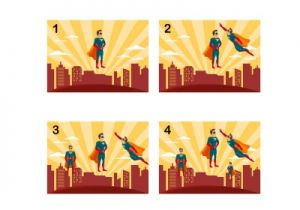

The Baby Growth 1st Year Posters are designed to show the physical milestones a baby reaches during their first year. These can be used as a display in the nursery to coincide with images of real babies achieving milestones throughout their first year. Please remember - This should be used as a general guideline only.
From now, babies begin to identify and respond to their own feelings, understanding other's feelings & needs and interact positively with others. A baby's social and emotional development increases by becoming more aware of other people that are around them and loves the attention they receive.
Babies use of language at this stage changes so much that it's hard to notice all the key changes that occur. By the end of this period a baby has transformed from non-verbal communicator into an active talker.
Babies will begin to find new ways of moving themselves around the house and has improved balance and body movements. These movements that a baby displays are often referred to as gross motor development.
Babies will spend most of their time watching the world around them, taking in information, getting directly involved and often combining both touch and sight which is often referred to as fine motor development.
A baby’s cognitive development at this stage is very rapid and many changes take place over this time. They’re learning new things each day and spend their time observing others to learn how to act. Babies become more curious as they begin to discover their surroundings and begin to engage in a wide variety of experiences.
This article describes what to expect from a New Born Baby, Appearance, Physical Characteristics of a newborn, average weight, head, hair, skin, genitals, umbilical cords, etc.. This guide will prepare all new parents on what to expect when you deliver the baby.
What an exciting time... your baby is finally moving on from milk to solids. This is a crucial stage in your baby's development. From now on, the rapid growth and development of your baby requires more nutrients that milk alone cannot provide. It is also important to remember that starting on solids is an ongoing process where you have to pay special attention to any food allergy symptoms that your baby may present.
It's so exciting to notice your baby's very first tooth coming through. Most babies “grow” their first tooth at around 4 -6 months of age. Sometimes a tooth can appear without any warning signs at all and sometimes you may notice a small bulge on the gum or a red patch on the gum or cheek, followed in a couple of days by a tooth. However some babies can feel great discomfort during teething,they may be grizzly, wake in the night, dribble more than usual or cry during feeding.

Goldilocks And The Three Bears Story Posters tell the story of Goldilocks and The Three...
View Worksheet...
Superhero Number Counting is a counting activity where children need to recognise and identify the...
View Worksheet...© 2009-2025 Aussie Childcare Network Pty Ltd. All Rights Reserved.

